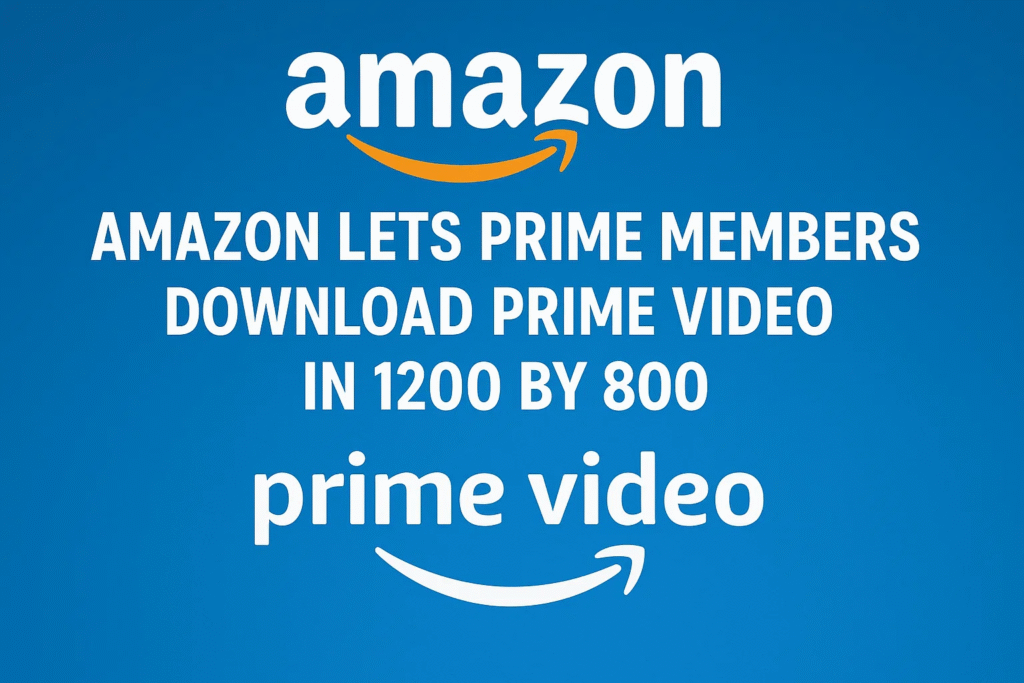Introduction
Amazon Prime, a subscription service offering benefits like free shipping, exclusive deals, and access to streaming content, has amassed millions of members worldwide. However, the process to cancel a Prime membership has been a point of contention for many users. Complaints about the difficulty of unsubscribing led to intervention by European consumer rights organizations, culminating in a significant policy change by Amazon.
Table of Contents
| Section | Description |
|---|---|
| Introduction | Overview of Amazon Prime and subscription complaints |
| Dark Patterns in Subscription Services | How companies make cancellations difficult |
| EU Intervention | Complaints, investigations, and regulations |
| Amazon’s Response | Implementation of the two-click cancellation system |
| Step-by-Step Cancellation Guide | How Prime members can unsubscribe easily |
| Broader Consumer Rights Implications | Lessons for other subscription services |
| Comparison with Other Regions | EU vs US approaches to subscription management |
| Conclusion | Summary and future outlook |
| FAQs | Answers to common questions |
Amazon Prime, the subscription service offered by Amazon, has become one of the most popular membership programs worldwide. With benefits like free shipping, exclusive deals, access to Amazon Video, music streaming, and early access to select products, it has drawn millions of subscribers globally. However, while many users appreciate the convenience of the service, others have faced significant difficulties when attempting to cancel their subscriptions.
The cancellation process was widely criticized for being unnecessarily complex and opaque, leading to consumer frustration. For years, users in Europe complained that Amazon deliberately designed the cancellation flow to be confusing, a practice commonly referred to as employing “dark patterns.” These complaints eventually caught the attention of the European Union, resulting in regulatory action aimed at ensuring fair treatment of consumers.
Dark Patterns in Subscription Services
“Dark patterns” refer to design choices in websites or apps that trick users into actions they might not want to take. In the case of Amazon Prime, these patterns made it difficult for members to cancel subscriptions.
Some examples of these dark patterns include:
-
Complex Navigation Menus: Cancellation options were buried under multiple layers of account settings, making it time-consuming to locate the correct path.
-
Confusing Language: Wording like “Keep your membership” or “Don’t lose benefits” discouraged users from completing the cancellation process.
-
Multiple Confusing Options: Users were presented with multiple screens of retention offers or alternative options, adding unnecessary steps.
-
Repeated Retention Prompts: Users were frequently shown “special deals” or “offers to stay” during the cancellation process.
These tactics, intentionally or not, created a barrier that forced users to spend extra time and effort to cancel, effectively retaining subscriptions that some users no longer wanted.
The prevalence of such practices has led to growing regulatory scrutiny, particularly in regions like the European Union, where consumer protection is strongly enforced.
EU Intervention
The European Union has been proactive in addressing deceptive subscription practices in digital marketplaces. Several consumer rights organizations, including the European Consumer Organisation (BEUC) and other national consumer councils, raised formal complaints about Amazon’s cancellation process.
They argued that Amazon’s methods violated the EU’s Unfair Commercial Practices Directive, which requires businesses to provide clear and transparent information to consumers, including the right to easily unsubscribe from services.
Following these complaints, the European Commission conducted an investigation. The findings confirmed that Amazon’s previous cancellation flow was indeed not compliant with EU consumer protection rules. The Commission stressed that consumers should be able to terminate subscriptions without unnecessary barriers or misleading tactics.
This regulatory pressure forced Amazon to revise its subscription management system for members in the European Union and the European Economic Area (EEA), resulting in one of the most significant changes to its Prime subscription process in recent years.
Amazon’s Response: Two-Click Cancellation
In response to the EU intervention, Amazon implemented a streamlined two-click cancellation system for Prime members in the EU and EEA.
Key highlights of this new system include:
-
Visibility: The cancel subscription button is now prominent and easy to locate in the user account area.
-
Simplicity: Members can cancel their subscriptions with just two clicks, significantly reducing time and effort.
-
Consistency: The new process applies across desktop, mobile, and tablet devices.
-
Compliance: This change ensures full adherence to EU regulations, removing potential violations related to dark patterns.
Amazon publicly stated that the simplified cancellation system was part of their commitment to improving customer experience. The European Commission praised this move, describing it as a positive step toward consumer empowerment and fair business practices.
Step-by-Step Cancellation Guide
For members in the EU or EEA, canceling Amazon Prime is now a simple process. Here’s a step-by-step guide to ensure smooth cancellation:
| Step | Instruction |
|---|---|
| 1 | Log in to your Amazon account. |
| 2 | Go to “Your Account” and select “Memberships & Subscriptions.” |
| 3 | Click on “Prime Membership” to view your active subscription. |
| 4 | Click the prominently displayed “Cancel” button. |
| 5 | Confirm your cancellation by following the on-screen instructions. |
This process eliminates the previous confusion, making it much easier for users to take control of their subscriptions.
It’s important to note that cancellation options may vary slightly depending on your country or device, but the two-click system ensures that all EU members have a straightforward way to unsubscribe.
Broader Consumer Rights Implications
Amazon’s decision to simplify the cancellation process has broader implications for digital consumer rights:
-
Setting Precedents: Other subscription-based services may follow suit to avoid regulatory scrutiny.
-
Transparency in Digital Services: Consumers are increasingly demanding clear and honest information about subscription terms.
-
Strengthening Regulatory Influence: The EU’s enforcement actions demonstrate that regulatory bodies can successfully influence corporate behavior to protect consumer rights.
-
Empowering Consumers: Simplified processes provide consumers with the freedom to make informed choices without manipulation or pressure.
Ultimately, this change reinforces the principle that companies operating in the digital marketplace must prioritize fairness and transparency.
Comparison with Other Regions
While the EU has acted decisively to regulate subscription practices, other regions such as the United States have been slower to implement similar rules.
-
European Union: Requires easy-to-use cancellation mechanisms and prohibits misleading practices.
-
United States: Amazon is facing legal challenges from the Federal Trade Commission (FTC) regarding subscription enrollments and cancellation difficulties. However, federal regulations on subscription transparency are less stringent compared to the EU.
This discrepancy highlights a growing divide in consumer protection standards between regions, with the EU emerging as a strong advocate for user rights in the digital marketplace.
Conclusion
Amazon’s new two-click cancellation process marks a significant milestone in consumer rights enforcement. By simplifying the steps required to unsubscribe from Prime membership, the company has addressed years of complaints and complied with EU regulations.
This development is more than just a convenience for Amazon members—it represents a broader shift toward fairer practices in subscription-based services. Companies worldwide may need to re-evaluate their cancellation policies and user experience flows to ensure compliance with consumer protection laws.
For subscribers, this change is empowering, giving them control over their memberships and reinforcing the principle that digital services should operate transparently and ethically.
Frequently Asked Questions (FAQs)
| Question | Answer |
|---|---|
| Is the two-click cancellation process available globally? | No, it is currently only available to Amazon Prime members in the EU and EEA. |
| Can I still use the old cancellation process? | Yes, the old process may still be available, but the two-click method is recommended for ease and speed. |
| Will Amazon implement similar changes in the United States? | There is no official announcement yet, though legal challenges may influence future changes. |
| Will I receive a refund if I cancel before renewal? | Refund eligibility depends on the timing of your cancellation. Check Amazon’s official refund policies for details. |
| How can I avoid subscription scams? | Always verify subscription offers via official channels, enable two-step verification, and be cautious of unsolicited emails or messages. |

